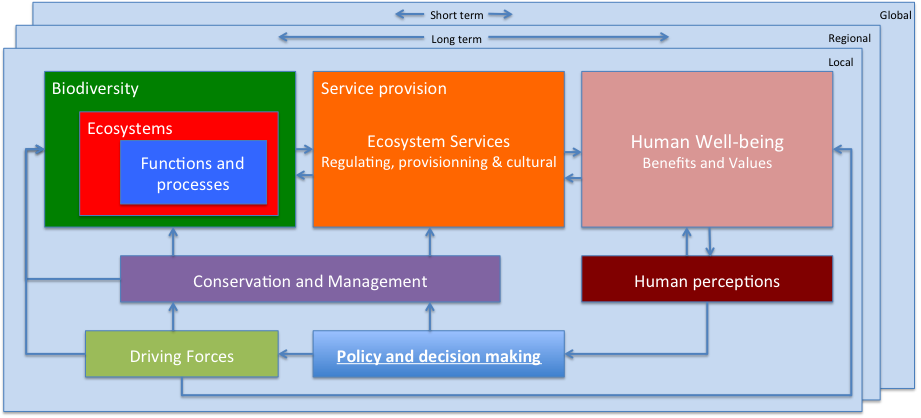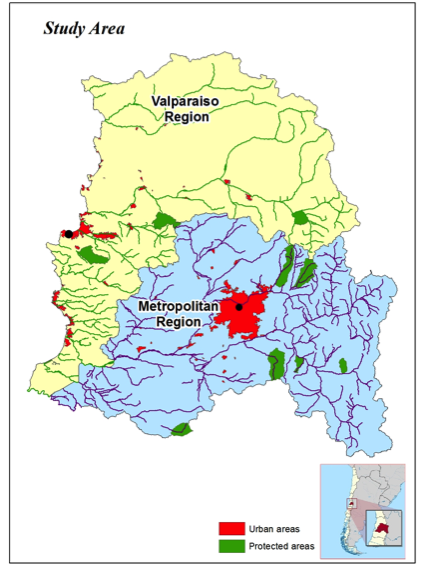(Available in español)
Planning for the conservation and management of ecosystem services in Central Chile
Biodiversity and ecosystem services are declining at unprecedented rates because of human activities. Activities to address this decline must be targeted through the adoption and implementation of effective local, national and international policies. To this end, the scientific community needs to provide credible information about spatial and temporal changes in the benefits that people obtain from ecosystems or ecosystem services and their interactions with human wellbeing. Methods to transparently communicate this information to decision makers are also required.

In this project we proposed an integrated framework to structure and guide decision-making around the conservation and management of ecosystem services to strengthen the dialogue between ecosystem services science and policy-making.
We will apply this framework in Central Chile, defined by the Metropolitan Region (Santiago and surroundings) and the Valparaiso coastal region encompasses approximately 31,800 km2 with a population greater than 8 million people.

This is an ideal region for the study of ecosystem services as this region concentrates half of the Chilean population; human activities (e.g. mining, industry and agriculture) are impacting the supply of critical ecosystem services such as regulating services (e.g. water quality, air quality regulation, carbon storage and sequestration, erosion protection,), provisioning services (e.g. freshwater provision, fibre and fuel and production) and cultural services (e.g. scenic beauty, cultural heritage and recreational opportunities).
Specifically, we are:
- Developing scenarios about the driving forces of change.
- Analysing the spatial and temporal dynamics of ecosystem services in relation to these changes.
- Developing a land use planning approach that is dynamically linked to policy scenarios.
- Exploring the potential implementation of financial mechanisms to reinforce the conservation and management of f ecosystem services.
Key people
Kerrie Wilson, Maria Martinez-Harms, Hugh Possingham, Jonathan Rhodes, Brett Bryan, Patricio Pliscoff.
Key partners
We are working closely with collaborators from the University of Chile, Catholic University of Chile, CSIRO and other partners to apply these methods in the Chilean Mediterranean region
Research Themes
Ecosystem services and biodiversity conservation
Key References
Reyers, B., P. J. O’Farrell, J. L. Nel, and K. A. Wilson. 2012. Expanding the conservation toolbox: conservation planning of multifunctional landscapes. Landscape Ecology 27:1121-1134. http://dx.doi.org/10.1007/s10980-012-9761-0
Martínez-Harms, M. J., & R. Gajardo. 2008. Ecosystem value in the Western Patagonia Protected Areas. Journal for Nature Conservation 16: 72-87. http://dx.doi.org/10.1016/j.jnc.2008.02.002
You must be logged in to post a comment.